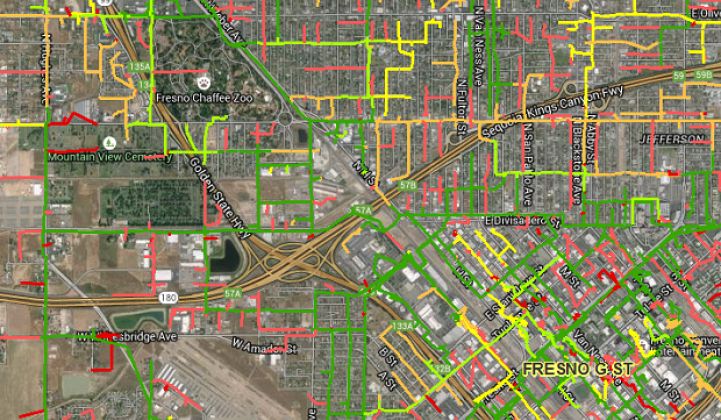Industry terms of art are valuable when they allow us to communicate precisely and with brevity.
Take “advanced metering infrastructure” -- a term that has come to mean a utility metering and communications solution that can send and receive messages from the utility. This term is clearly distinct from AMR (automatic meter reading, which is a one-way communicating metering solution) and electromechanical meters. But this type of industry parlance loses its usefulness when the term’s meaning becomes amorphous.
In the utility industry, this trouble arises when industry participants falsely convince themselves that a technology, problem or solution is unique. This leads all stakeholders -- including utilities, regulators and vendors -- to get trapped in an infinite loop of endlessly defining and redefining terms of art, which can confuse the broader public and become a real problem.
The latest victim in the long line of definition quagmires is the pseudo skin disease turned grid optimization platform, DERMS. Or, less efficiently written, a “distributed energy resource management system.”
A DERMS is a new software-based product that promises to solve the challenges of integrating more distributed solar, energy storage, demand response and other energy resources on the grid -- and even to use these distributed energy resources to improve the operation of the grid. Taking cues from the industry buzz around distributed resource integration, technology companies across the grid edge vendor landscape are seeking to claim their position in the emerging DERMS category.
However, valid claims to the category are a stretch for most companies, even for those that have already secured a place at the integration table. The key distinction is that, in a world where core utility software is continually augmented by advanced applications and data integration, most technology companies have yet to fully develop the capabilities that constitute a true DERMS product, rather than merely providing upgrades to legacy utility software.
Building a view of DER lifecycle management
GTM Research's recent note "DERMS: A Term Gone Too Far?" tries to bring some clarity to this discussion and properly position DERMS technology within the larger software-based DER integration discussion in the industry. I approach this challenge with a functional lens focused on use cases. This can get complicated, as various new software and power electronics products continue to overlap in their functional designations. Still, my approach is meant to offer a more nuanced view of this topic.
Through a functional lens, the integration of DERs is not just a question of resource dispatch from a utility’s perspective. Instead, DER integration affects many core utility processes including grid planning, network operations and customer service. Several regulatory efforts, such as New York’s Reforming the Energy Vision, have taken a broad approach to DER integration, often focusing on planning, operations and new markets for energy services.
Much like the broad approach taken by regulators, GTM Research has developed a framework in which to view distributed resource integration within the context of a distribution utility. The framework describes the management of these resources throughout their lifecycle, pointing out the systems -- both legacy and new -- that are required to fully integrate thousands or even millions of new systems into a utility’s grid.
The process shown below provides a utility’s view of a behind-the-meter and customer-owned distributed resources. The process for utility-owned distributed energy is similar, though the initial registration step isn’t required.
FIGURE: Utility DER Lifecycle Management Process
 Source: GTM Research
Source: GTM Research
This framework adds nuance that can inform the focus and capability of a vendor’s solution or a utility’s project. If we were developing the DER lifecycle management process from the ground up, devoid of considerations of legacy investments (using an approach like the 51st State Initiative), the industry could work to create an integrated, seamless customer and employee experience supported primarily by a single software solution. In the process, we would have solved one of the most vexing utility IT problems of this decade.
Alas, if only it were that simple. The realities of legacy investments in software, data integration, and personnel training create a much more fragmented enterprise software environment at the utility, with varying levels of data quality, data governance and staff expertise. The software environment requires taking a deeper look from a perspective that incorporates the systems, both legacy and new, that utilities have or will need in each of these steps to implement a full resource lifecycle solution.
At this level of depth, it becomes clear that a multitude of vendors offer legacy solutions that can have an impact on a utility’s distributed resource lifecycle management process. The extension of a vendor’s legacy product -- or integration or replacement of the product with a host of legacy and new utility applications -- in most cases will have significant implications for the resource management lifecycle.
The exceptions to this rule require major overhauls or completely new solutions, such as distribution simulation capabilities; mid- to long-term probabilistic forecasting; granular, short-term, bottom-up production; consumption and dispatch forecasting; and distributed resource management.
When DERMS is expanded to include all functions and processes relating to distributed resource, it loses its usefulness.
Read GTM Research's insight into how to contextualize DERMS as a software-based lifecycle management solution. Get the full complimentary research note here.
---
Let's talk about DERMS. GTM Research invites your input on DER lifecycle management. If you are currently working on a DERMS integration and would like to participate directly in our studies, please email us at [email protected].



